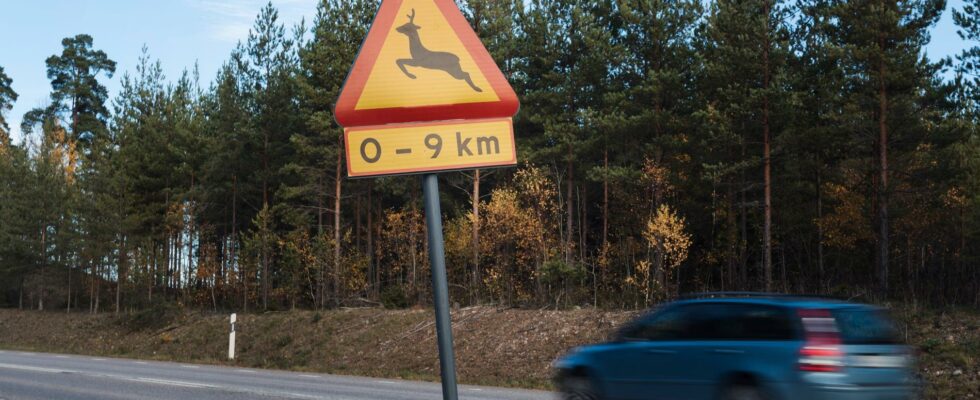unsaveSave
expand-left
full screen It is at dawn and dusk that road users should be extra observant of game. Archive image. Photo: Stina Stjernkvist/TT
More road users, increased speeds and more or less “self-driving” cars are, according to the experts, some of the explanations for the increasing number of wildlife accidents.
October and November are the months when there are the most accidents with deer, moose and wild boar. The insurance company If expects 16,000 incidents, corresponding to over 250 per day, in the coming months.
– Game accidents are increasing every year and there is no clear evidence as to what causes it, but a general opinion is that it is connected to the number of cars has increased, says Erica Broström, responsible for hunting and game issues in the Bergslagen police region.
Speed is a significant factor in spotting game on the side of the road.
– The experience is that people are in more of a hurry and if you are stressed, drive a little too fast and have your eyes on your phone instead of driving, then you don’t have time.
Increased speeds
Deer account for by far the most wildlife accidents in traffic. The risk of encountering deer, elk and red deer is greatest at dusk and dawn – in other words, when tired and stressed road users are usually on their way to and from work. Wild boar and badgers, on the other hand, are more active at night.
That it is the number of vehicles, increased speeds in combination with large game tribes that are behind the many game accidents is confirmed by Kenneth Kronberg, responsible for the National Game Accident Council in the Stockholm/Gotland region.
– We have stopped driving and go along. We rely on the four-wheel drive, ABS brakes and anti-skid system. Add to that a phone that has to be looked at all the time.
– The cars have also become heavier, there are more kilos that have to stop on the same distance, but because we drive faster, we don’t have a chance, he says.
Poor game knowledge
He also notes a significantly reduced knowledge of game, where SVT’s slow-motion TV program “Elgvandringen” is for many the only reference to what is moving in the forest.
– The road goes through the forest, it is not the forest and the trees that stand by the side of the road. Motorists need to get better at keeping their eyes on the side of the road and thinking wildly, says Kenneth Kronberg.
Game fencing is an effective way to keep animals off the roads. According to Erica Broström, the risk of accidents is halved.
– But there are also barriers that limit mobility. In addition, it is an expensive solution, she says, and is supported by Kenneth Kronberg:
– We will not be able to build game fences across the country, many hundreds of miles would be needed.
Instead, the hope lies in technological development.
– With the help of thermal vision, the cars themselves could read and identify different species of animals on the side of the road and warn or brake in some way, says Kenneth Kronberg.
